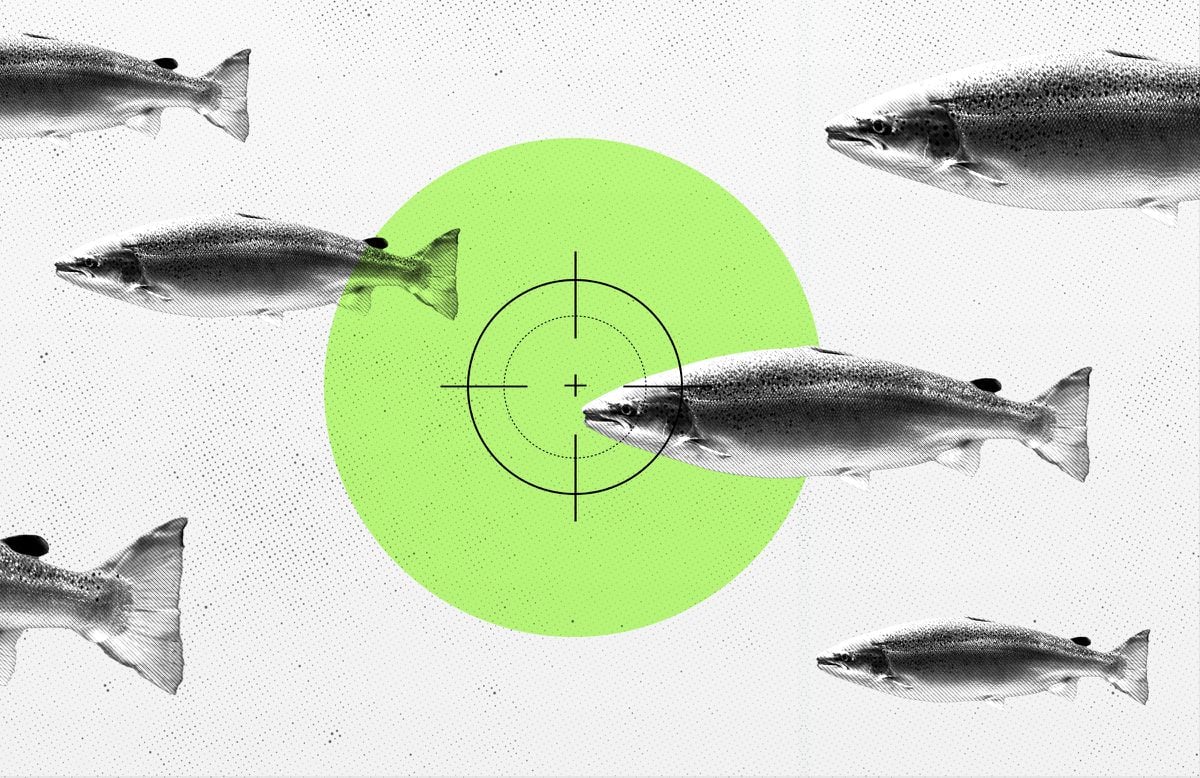Last week an image generated by artificial intelligence where salmon could be seen climbing the waters of a river ran like wildfire through social networks.
The sight of said photograph caused laughter and jokes of all kinds, with the AI as the scapegoat: the algorithm's response to the request for "salmon going up a river" was not that of live fish in their natural habitat, but that of supreme and fillets of said fish, cut and prepared as one can usually find them in the supermarket, splashing between waterfalls, in an almost bucolic scene.
Regarding the image, many took the opportunity to raise their torches and cite it as an example of how far AI is from being able to steal our work, of its biases and limitations;
when this is, in my opinion, the opposite: a perfect mirror that shows us exactly what is the reality of our relationship with salmon.
After all, the algorithm fishes in the database provided by us, who have the supposed natural intelligence, and in our daily reality there is more processed salmon fillet meat than live salmonids going up rivers in Idaho, Alaska, California or Scotland.
They asked an AI to recreate "a salmon going up a river" and this is what it produced.
The database had to have more specimens ready to eat than in the wild.
____Bias
in artificial intelligence (AI) refers to the bias of algorithms and models of… pic.twitter.com/AHLZ4jUiVu
— MΛRC VIDΛL (@marcvidal) April 6, 2023
Wild Atlantic salmon is a critically endangered species and a quarter of Pacific varieties are on the verge of extinction.
At the same time, it is the most consumed fish in the world.
How is this paradox possible?
The boom in our appetite for fish in recent decades has outpaced what we can sustainably catch, 80% of fishery resources are today on the brink of collapse and can't take any more pressure, so aquaculture, raising fish of any kind on farms, is presented as a sustainable alternative under the motto "from capture to cultivation".
More information
Salmon do not go up in Spanish rivers
This is the fastest growing industry in world food production, not 3D-printed hamburgers or
vegetable protein
nuggets ;
It is worth $160 billion and accounts for about half of world fish consumption.
Of all the farmed fish species, salmon aquaculture is the fastest growing.
We eat farmed salmon, not from the river.
What, in its day, barely 30 years ago, was a luxury product, only available to a few, today it outsells the rest of the local fishing species in Europe, Japan and the United States.
This is exactly the reality of the salmon that artificial intelligence showed: captive-bred fillets that need the organs of a live salmon to be preserved without rotting.
What is factory-farmed salmon if not a living protein stash, a living pantry of fillets?
That is not an animal, it is a sack of feed, destined to satisfy a demand that does not stop growing, and that it does so in a very curious way, because —it is necessary to both point out and emphasize what follows— you do not demand fish, you demand specifically salmon.
Come with me to take a couple of accounts.
It takes around one and a half kilograms of feed to produce one kilogram of salmon meat.
This data stands out positively next to the six kilos required for beef or two for chicken, and is often used to support intensive aquaculture as a sustainable activity.
The big difference between one and the other is that salmon cannot be put to graze on algae or on a diet of soybeans and cereals: they are carnivorous animals.
Each kilo of salmon feed is produced by fishing and processing between 5 and 8 kilos of other species, 90% of which are of high nutritional and taste value: mackerel, sardines, anchovy or Peruvian anchoveta.
One fifth of the world's total catch goes to feed farm animals.
Imagine what it would mean at the level of global sustainability to short-circuit that system!
Skip the salmon and eat directly the fish that salmon eats!
But not.
You want salmon, not sardines or anchovies.
To satisfy that desire, Peru, the world's largest producer of fishmeal and fish oil for the manufacture of salmon feed, pulled 521,000 tons of fish from the sea last year alone.
Behind Peru, China has more than 50 fishmeal processing plants spread along the west coast of Africa, in Gambia, Mauritania and Senegal.
A single one of those factories can process 7,500 tons of fish in a year.
Senegal alone processes nearly 100,000 tons of fish caught on its coasts by Chinese ships every year, fish that once fed families, fishermen and small local merchants.
Today all of them live in misery.
This fishmeal travels to the large fish farms in the seas of Chile, North America, Norway or Scotland and is poured as feed into the cages where hundreds of thousands of salmon fight not to be eaten alive by lice and excrete a blanket of rot to the seabed.
When there are storms or accidents, the captive-bred specimens escape, spreading the typical pests of salmon farms throughout the natural environment.
Farmed fish are medicated to prevent mortality, wild ones drop like flies.
For every wild salmon caught, there are seven farmed salmon that have escaped from captivity.
True wild salmon are practically non-existent.
The bias of photography is not in artificial intelligence, it is in the natural.
The little variety of our capricious demand feeds this macabre system and condemns most of those involved to a life of destitution, salmonids included.
Next time you go to the fishmonger, look up!
There are 799 non-salmon species of edible fish on the market right now.









/cloudfront-eu-central-1.images.arcpublishing.com/prisa/B7F2F3HZ2JCUHDZJKAGKAXXPSU.jpg)